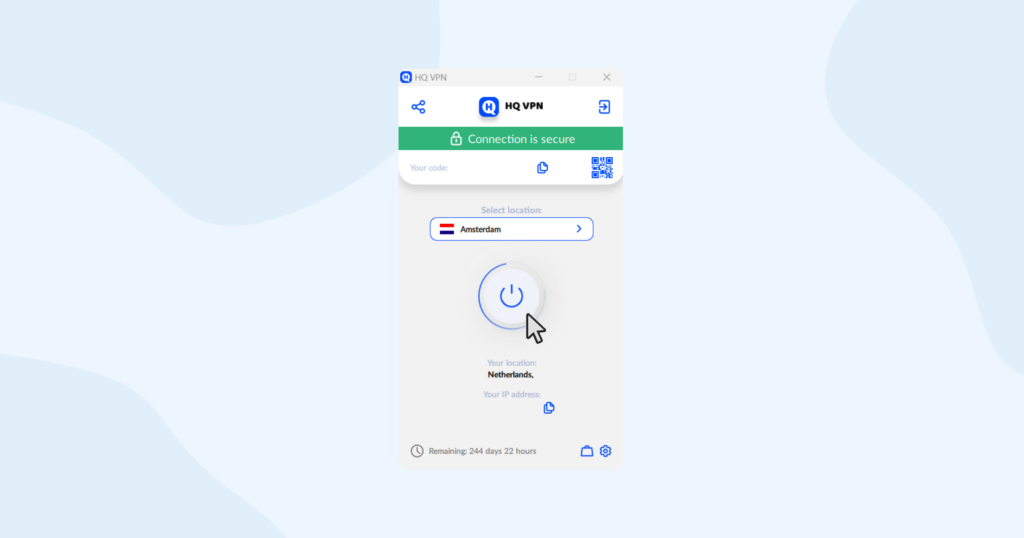

How to Turn Off VPN on Any Device

So you’ve been using a VPN to protect your online privacy, but now you want to turn it off? No worries, I’ve got you covered!
In this blog post, we’ll walk you through the steps on how to turn off a VPN on any device, while also shedding light on why it’s generally safer to keep it switched on. Let’s dive in!
When do you need to turn off VPN?
There are several situations when you might need to turn off your VPN. Let’s explore the most common ones.
Troubleshooting network issues
Sometimes, when you encounter connectivity problems or difficulty accessing certain websites or services, it’s worth trying to disable your VPN temporarily. This allows you to see if the VPN is causing any conflicts or if the issue lies elsewhere. For example, if you’re having trouble accessing a local printer or connecting to a gaming server, turning off your VPN could potentially resolve the problem.
Accessing location-restricted content
Have you ever come across a streaming service or website that is only available in your country? Well, turning off your VPN can be helpful in such cases. Let’s say you want to watch your favorite TV show on a streaming platform, but it’s only accessible within your home country. By disabling your VPN, you can bypass the location restrictions and enjoy your show without any hiccups.
Traveling to countries with VPN restrictions
Some countries, like China, Iraq, and North Korea, have strict regulations on VPN usage. If you find yourself traveling to such destinations, it’s important to know that using a VPN may be prohibited or restricted. In these situations, you’ll need to turn off your VPN to comply with local laws and avoid any potential issues.
Local network restrictions
Some networks, particularly in workplaces or educational institutions, may have specific policies in place that prohibit the use of VPNs. If you’re connected to such a network and need to access certain resources or services that require VPN deactivation, you’ll have to turn off your VPN temporarily.
Software or app conflicts
In rare cases, certain software programs or applications may conflict with your VPN, causing compatibility issues or malfunctions. If you experience any unusual behavior or errors with specific software while your VPN is active, turning it off temporarily can help troubleshoot the problem and determine if the VPN is the root cause.
How to disable a VPN on macOS
You can turn off your VPN connection right in the app itself or by going into the network settings of your macOS. If you opt to use the second method, here’s what you need to do.
- Go to “System settings” to open the settings for your Mac device.
- In the System settings window, locate and click on the “Network” icon. This will open the network settings.
- In the left-hand sidebar of the Network settings, you’ll see a list of network connections. Look for your VPN connection in the list and select it.
- Once you’ve selected your VPN connection, you’ll see a button labeled “Disconnect” or a similar option. Click on it to turn off your VPN.
That’s it! Your VPN should now be turned off on your macOS device. You can verify by checking the Network settings or attempting to access websites or services that were previously restricted by the VPN.
How to turn off a VPN on iPhone/iOS?
To turn off a VPN on your iPhone or iOS device, follow these simple steps.
- Locate and tap on the Settings app, which is represented by a gear icon on your home screen.
- In the Settings menu, scroll down and look for the “VPN” option. Tap on it to access the VPN settings.
- Under the VPN settings, you’ll see a list of configured VPN connections. Look for the one that is currently active or enabled.
- Next to your active VPN connection, you’ll find a switch. Simply toggle the switch to turn off the VPN. The switch will move to the “Off” position.
- A prompt may appear asking for confirmation to disconnect from the VPN. If prompted, confirm the action by tapping “Disconnect” or a similar option.
How to turn off a VPN on Windows
Note that most VPN applications have their own user interfaces that allow you to easily enable or disable the VPN connection. For example, if you are using HQ VPN, all you need to do is to click the big button in the center of the interface.

However, if you’re unable to access the VPN app or prefer using Windows settings, you can follow these steps to turn off a VPN.
- Open the Windows settings. Click on the Start menu (Windows icon) located at the bottom left corner of your screen. From the Start menu, click on the gear icon to open the Windows settings.
- Access the Network settings. In the Windows settings, locate and click on the “Network & Internet” option. It usually appears as one of the first settings options.
- Navigate to the VPN settings. Within the Network & Internet settings, you’ll find several options on the left sidebar. Click on “VPN” to access the VPN settings.
- Find your active VPN connection. Under the VPN settings, you’ll see a list of configured VPN connections. Look for the VPN connection that is currently active or enabled.
- Turn off the VPN. Once you’ve located your active VPN connection, click on it to expand the options. Look for a toggle switch or a “Disconnect” button. Toggle the switch to the “Off” position or click on “Disconnect” to turn off the VPN connection.
How to turn off a VPN on Android
Turning off a VPN on Android is typically a simple process. Here’s a step-by-step guide to help you do it:
- Open the “Settings“. Locate and tap on the “Settings” app on your Android device. It’s usually represented by a gear icon and can be found on your home screen or in the app drawer.
- Go to “Network & internet”. In the Settings menu, scroll down or search for the “Network & internet” option and tap on it.
- Access the VPN settings. Under the “Network & internet” section, you’ll find various connectivity options. Look for “VPN” or a similar option and tap on it to access the VPN settings.
- Find your active VPN connection. In the VPN settings, you’ll see a list of configured VPN connections. Identify the VPN that is currently active or enabled.
- Turn off the VPN. Tap on the active VPN connection to open its details or options. Look for a toggle switch or a “Disconnect” button. Tap the switch to turn off the VPN, or tap “Disconnect” to disable the VPN connection.
How to disable a VPN on Linux
- In most Linux distributions, you can access the Network manager by clicking on the network icon in the system tray or top panel of your desktop environment.
- Once the Network manager menu opens, look for an option related to VPN connections. It may be labeled as “VPN Connections” or “Configure VPN,” among others. Click on it to access the VPN settings.
- In the VPN settings, you’ll see a list of configured VPN connections. Identify the VPN connection that is currently active or enabled.
- Click on the active VPN connection to open its configuration options. Look for an option to disable or disconnect the VPN. This option may be a button, a checkbox, or a toggle switch. Click or toggle it to turn off the VPN.
- A confirmation prompt may appear asking for confirmation to disconnect from the VPN. If prompted, confirm the action to disable the VPN connection.
How to turn off VPN on your router
- Access the router settings. Open a web browser on a device connected to your router. Enter your router’s IP address in the browser’s address bar. Common IP addresses for routers are 192.168.1.1 or 192.168.0.1, but it can vary depending on your router model.
- Log in to the router. Enter your router’s username and password. If you haven’t changed them, check the router’s manual or look for default login credentials specific to your router model. Once logged in, you should see the router’s administration interface.
- Locate the VPN settings. The VPN settings may be located in different sections of the router’s interface, depending on the brand and model. Look for a “VPN” tab. Some routers have a dedicated VPN menu, while others integrate VPN settings within the general network settings.
- Disable the VPN feature. Once you’ve located the VPN settings, find the option to disable or turn off the VPN. It may be a toggle switch, a checkbox, or an option to disconnect the VPN connection. Click on it to disable the VPN feature on your router.
- Apply the changes. After disabling the VPN feature, look for a “Save” or “Apply” button on the router’s interface. Click on it to save the changes you made to the settings.
What happens when you disable VPN?
When you disable a VPN, your internet connection will no longer be encrypted and routed through the VPN server. This means that your online activities will no longer be masked and protected by the VPN‘s security and privacy features.
Disabling a VPN comes with potential risks and considerations, here are the most crucial of them.
Loss of privacy
Without a VPN, your ISP, as well as other entities like government agencies or hackers, can potentially monitor your online activities. This means your browsing history, online communications, and personal data may be visible to others.
Reduced security
VPNs help secure your internet connection by encrypting your data and protecting it from potential threats. Disabling the VPN removes this layer of security, making it easier for cybercriminals to intercept and exploit your information.
Exposure to geo-restrictions
Some online content or services may be geo-restricted, meaning they are only accessible from specific regions. Disabling the VPN may prevent you from accessing such content or services that require a certain geographical location.
Potential limitations on anonymity
VPNs can help anonymize your online presence by masking your IP address. When you disable the VPN, your real IP address becomes visible and you’d be surprised how much information your IP can reveal about you. Check out this article to find out how websites or online services use your real IP to track and identify you.
If you decide to turn off your VPN, ensure that you’re mindful of the potential consequences and take appropriate steps to maintain your privacy and security, such as using secure websites (HTTPS), being cautious about sharing personal information, and considering alternative security measures like firewalls and antivirus software.



